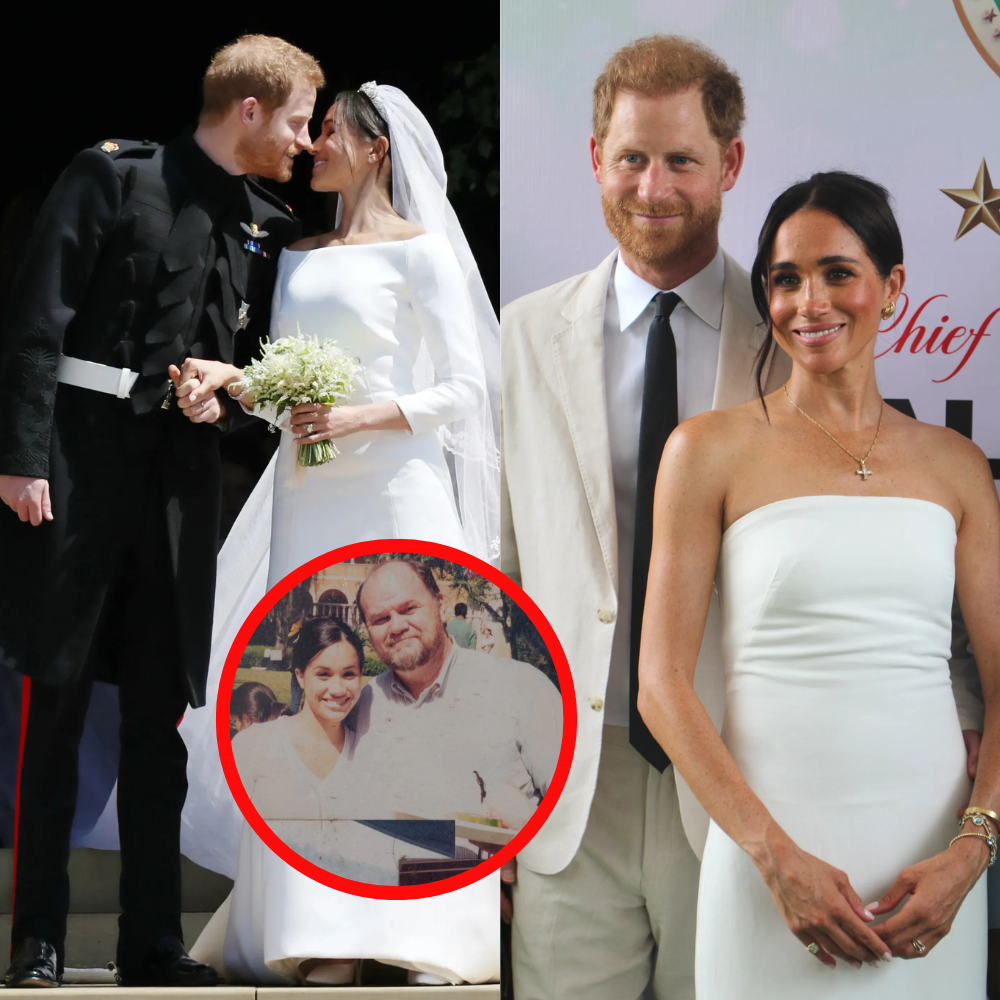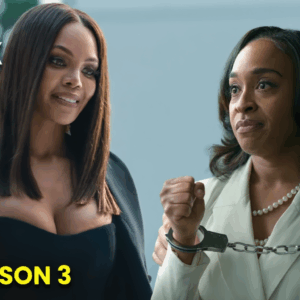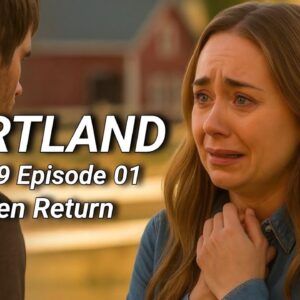
On May 19, 2018, the world watched in awe as Meghan Markle, radiant in a Givenchy gown, walked down the aisle of St. George’s Chapel at Windsor Castle to marry Prince Harry. Nearly two billion viewers tuned in, captivated by the fairy-tale romance of a Hollywood actress and a British prince. Yet, amidst the splendor, one detail sparked whispers that lingered for years: Meghan’s father, Thomas Markle, was conspicuously absent, and it was King Charles—then Prince of Wales—who escorted her down the aisle. Was this a heartwarming gesture of royal acceptance, or did it mask a deeper, more troubling story? Rumors swirled that Meghan might have been ashamed of her father, choosing the future king to avoid the spotlight on her fractured family. The truth, as it unfolds, is far more complex, weaving together personal drama, health crises, and a bold statement of independence.
The saga began in the days leading up to the royal wedding, when speculation about who would walk Meghan down the aisle reached a fever pitch. Thomas Markle, a retired Hollywood lighting director living in Rosarito, Mexico, was initially set to perform the traditional role. However, a series of events unraveled this plan, thrusting the wedding preparations into chaos. Thomas was caught in a paparazzi scandal, exposed for staging photos of himself preparing for the wedding in exchange for payment. The images, splashed across tabloids, showed him browsing internet cafes and trying on suits, a move that embarrassed Meghan and Prince Harry. The scandal painted Thomas as opportunistic, straining an already fragile relationship with his daughter. Reports suggest that Meghan and Harry made repeated attempts to contact him, but communication broke down, leaving the bride-to-be grappling with a public relations nightmare.
Compounding the drama, Thomas suffered health setbacks. He claimed to have experienced two heart attacks in the days before the wedding, requiring urgent surgery that prevented him from traveling to the UK. While some questioned the validity of his health claims, citing inconsistencies in his public statements, Thomas maintained that his condition made attendance impossible. From a rented Airbnb, he watched his daughter’s wedding on television, a poignant moment for a father who had once dreamed of walking her down the aisle. In later interviews, Thomas expressed regret, acknowledging the emotional weight of missing “one of the greatest moments in history.” He praised King Charles, calling him a worthy replacement, yet admitted jealousy and sorrow for not being there himself.
As the wedding approached, Meghan faced a pivotal decision. With her father out of the picture, many expected her mother, Doria Ragland, to step in. Doria, a poised and private social worker, had traveled with Meghan to Windsor Castle and was the only family member present at the ceremony. Her quiet strength won admiration from the royal family, and some believed she would be the natural choice to escort her daughter. Yet, Meghan had other plans. In a move that blended tradition with defiance, she chose to walk the first half of the aisle alone—a historic first for a British royal bride. This act was hailed as a feminist statement, symbolizing her independence and confidence as a modern woman entering the monarchy. Halfway down the aisle, she was joined by King Charles, who escorted her to the altar, where Prince Harry awaited, visibly smitten.
The decision to involve Charles was deeply personal. Meghan later shared that she had grown close to her future father-in-law, describing him as “charming” and a vital figure in her life after the fallout with her own father. She personally asked Charles to walk her down the aisle, a gesture that underscored her desire to embrace her new royal family. Charles, touched by the request, agreed without hesitation, seeing it as an opportunity to support his son and daughter-in-law. Prince Harry, reflecting on the moment, expressed gratitude, noting that his father’s willingness to step in was a testament to his role as a supportive parent. The image of Charles and Meghan walking arm in arm, both smiling warmly, became an iconic moment, symbolizing unity amidst the chaos of the preceding days.
However, the decision was not without controversy. Some within the royal circle raised eyebrows, questioning whether Meghan’s choice reflected shame or embarrassment about her father’s actions. The paparazzi scandal had cast Thomas in an unflattering light, and his absence fueled speculation that Meghan sought to distance herself from her family’s dysfunction. Critics pointed to her decision to walk alone initially as evidence of a calculated move to control the narrative, ensuring the focus remained on her entrance rather than her father’s absence. Others saw it as a pragmatic choice, born of necessity rather than rejection. Meghan’s strained relationship with Thomas, exacerbated by his media interactions and the leaked letter she sent him in 2018 pleading for privacy, suggested a deeper rift that predated the wedding.
Behind the scenes, the royal family itself was divided. While Charles embraced his role, Queen Elizabeth II reportedly felt uneasy about the arrangement. She believed the optics of the Prince of Wales standing in for Thomas Markle disrupted tradition, particularly given Meghan’s status as a divorcée. The Queen’s concerns extended to other aspects of the wedding, including the sermon by American Archbishop Michael Curry, which she found overly long, and Meghan’s “too white” Givenchy gown, which she deemed flamboyantly virginal for a second marriage. These sentiments, revealed in later biographies, hinted at underlying tensions about Meghan’s integration into the monarchy. Prince Philip, too, was said to view Meghan with skepticism, drawing parallels to Wallis Simpson, the American divorcée who prompted Edward VIII’s abdication.
For Meghan, the wedding was a balancing act. She navigated intense scrutiny, from her family drama to the expectations of royal protocol, all while striving to carve out her identity. Her decision to walk alone for part of the aisle was a deliberate nod to her independence, a quality that defined her career as an actress and activist. By choosing Charles for the latter half, she signaled her acceptance into the royal fold, a gesture that resonated with Harry, who later praised his father’s support. The moment was not without its lighter notes: as Charles delivered Meghan to the altar, Harry whispered, “Thank you, Pa,” a heartfelt exchange that captured the warmth between father and son.
In the years since, the narrative around Meghan’s wedding walk has evolved. Her Netflix docuseries, Harry & Meghan, offered insight into her perspective, framing Charles’s role as a meaningful substitute for the father she felt she had “lost” to scandal and estrangement. Thomas, meanwhile, has oscillated between remorse and resentment, expressing a desire to reconcile while occasionally fueling media controversies. His 2025 interview, given as he prepared to leave Mexico, struck a hopeful tone, emphasizing gratitude to Charles and a wish to reunite his family. Yet, the estrangement persists, a lingering shadow over Meghan’s royal journey.
The question of shame remains a matter of interpretation. Meghan’s defenders argue that her choices were pragmatic, driven by her father’s unreliability and her desire to protect her wedding day from further drama. Critics, however, see a calculated effort to elevate her image by aligning with the monarchy’s prestige, sidelining a father whose presence might have invited unwanted scrutiny. The truth likely lies in a blend of motives: a daughter navigating a public betrayal, a bride embracing her new family, and a woman asserting her agency in a moment watched by billions.
As the dust settles, the image of Meghan and Charles walking down the aisle endures—a snapshot of grace under pressure. It encapsulates the complexities of family, duty, and identity, set against the backdrop of a modern royal fairy tale. Whether driven by shame, strategy, or necessity, Meghan’s decision reshaped royal tradition, sparking a conversation that continues to captivate the world.




